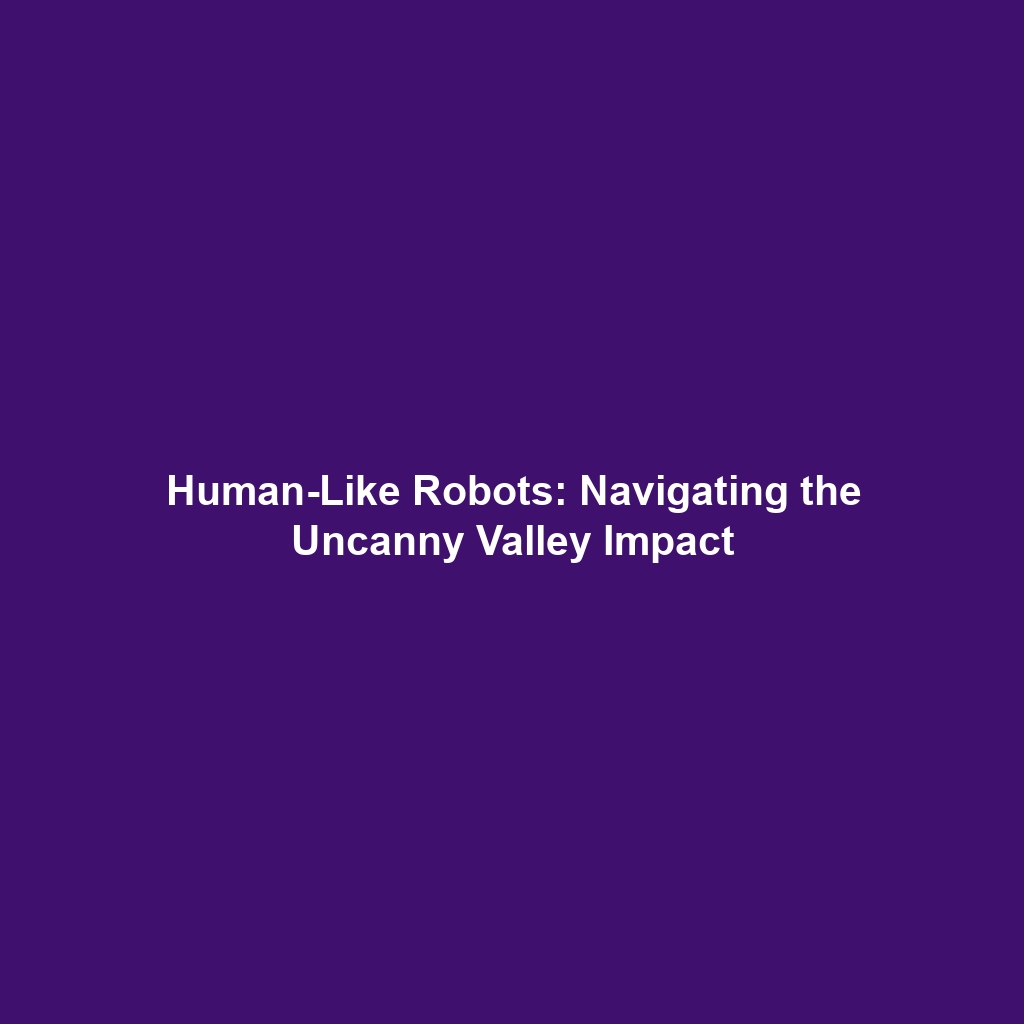Human-Like Robots and Psychological Impact: Managing the Uncanny Valley
Introduction
Human-like robots, or humanoid robots, are designed to emulate human appearance and behavior, igniting curiosity and concern in equal measure. One of the most significant psychological phenomena associated with humanoid robots is the uncanny valley, a term coined by Japanese roboticist Masahiro Mori in 1970. This concept illustrates the discomfort experienced by humans when robots appear almost, but not quite, human. Understanding the psychological impact of humanoid robots, particularly in managing this uncanny valley, is essential as society increasingly interacts with these technologies. This article delves into the complexities surrounding human-like robots and their psychological implications, shedding light on their significance in advancing robotics.
Key Concepts
The Uncanny Valley
The uncanny valley refers to the dip in emotional response that people experience when confronted with a robot that bears near human resemblance. It raises questions about perception, empathy, and the ability to forge connections with non-human entities.
Human-Robot Interaction (HRI)
Human-Robot Interaction (HRI) studies how humans communicate and engage with robots. A better understanding of HRI principles can help in designing humanoid robots that more effectively navigate the uncanny valley.
Emotional Design
Emotional design focuses on creating robots that can evoke positive emotional responses. This aspect is crucial in developing humanoid robots that can be embraced by users without triggering discomfort.
Applications and Real-World Uses
The integration of human-like robots into various sectors demonstrates their potential to reshape industries. Some notable applications include:
- Healthcare: Human-like robots are used as companions for the elderly, helping combat loneliness and providing emotional support.
- Education: Humanoid robots serve as teaching assistants, engaging students by making learning more interactive and relatable.
- Customer Service: Retailers employ humanoid robots to assist customers, creating a friendly and approachable shopping experience.
Current Challenges
Despite their growing presence, the study and application of human-like robots face several challenges:
- Essential Design Flaws: Counteracting the uncanny valley effect requires meticulous attention to design elements.
- Ethical Concerns: The deployment of humanoid robots raises questions regarding consent, privacy, and emotional attachment.
- Public Acceptance: Gaining public trust is difficult when users fear the implications of robotic interactions.
Future Research and Innovations
Ongoing research is crucial to advancing the field of humanoid robots and mitigating the uncanny valley phenomenon. Some areas ripe for exploration include:
- Enhanced AI: Developing robots equipped with advanced artificial intelligence could lead to more genuine interactions.
- Improved Biomechanics: Future robots may mimic human movements more accurately, reducing discomfort in users.
- Customizable Features: Allowing users to personalize their robots can foster emotional connections and disperse unease.
Conclusion
The interplay between human-like robots and psychological impact underscores the importance of understanding and managing the uncanny valley. By prioritizing emotional design and human-robot interaction, developers can create humanoid robots that resonate positively with users. Continued research in this area promises to break boundaries in robotics and redefine how society perceives and interacts with technology. For further insights on robotics and technology, explore our additional articles on related topics.
